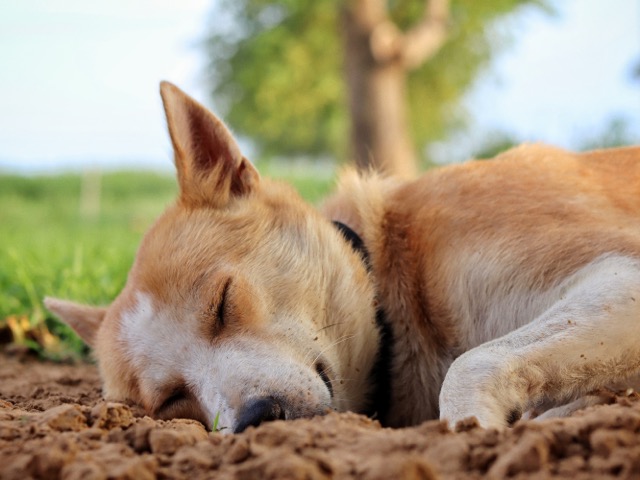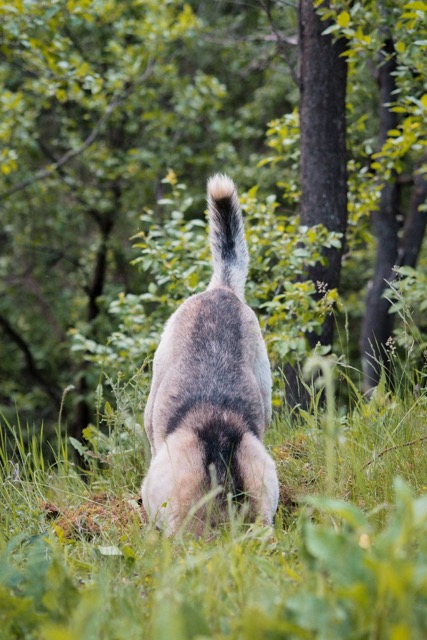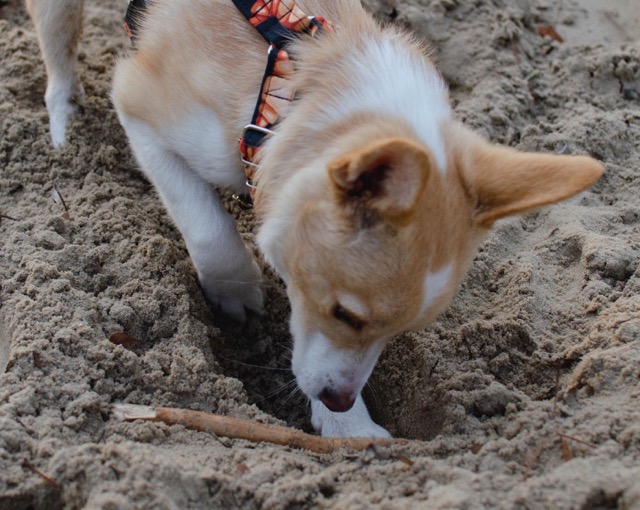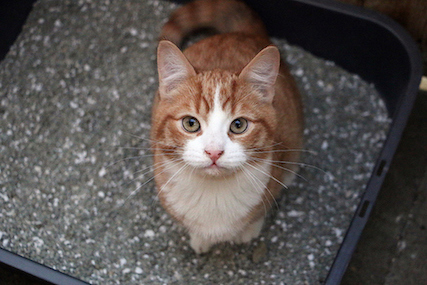As summer begins, you may spend more time in your backyard with your four-legged best friend. More backyard time also means more opportunities to explore the space and possibly get into trouble! One of the more troublesome backyard dog behaviors is digging.

Dogs dig for four main reasons:
- To find a cool spot to lay
- Digging can be fun
- To escape their yard
- They may be attempting to bury a resource.
To determine why your dog is digging, I analyze the hole dug and their environment.
Digging for a cool place to lay
Dogs dig to create a cool place to lay. In these cases, dogs dig shallow holes, covering a wide space. They begin digging, create a shallow hole, and place their belly on the cool earth. Consider your dog’s environment to help identify if your dog is digging to cool off. What is the temperature outside, and is there a shady spot or somewhere else they could cool off? Certain breeds are prone to overheating, specifically any brachycephalic (i.e., dogs with short, smashed snouts) or any breed bred for colder climates (e.g., sled dogs, Newfoundlands, Bernese Mountain Dogs, Chow Chows, Shiba Inus, etc). Check the temperature outside and if your dog’s breed is prone to overheating.
To prevent this type of digging, ensure your dog has access to a cool place in the shade with plenty of air movement as well as access to plenty of water. I provide my dogs with a Kuranda, or other cooling, dog bed. If my family spends most of the day outside, I give my dogs access to a sprinkler or a pool. A kiddie pool on a hard surface patio works great! This keeps the fun going and my dogs comfortable during the potentially hot day.
Digging for fun
Not only do dogs dig to find a cool space to lay, but dogs also dig because it is fun! When dogs dig for fun, the hole’s circumference is smaller, and the hole is deeper. Mature dogs digging for fun often spend lots of time outdoors unattended by a pet parent. They may be bored or find digging with another dog the icing on the cake when it comes to play. Puppies and adolescent dogs are the main offenders of this type of digging.
To combat and prevent digging for fun, monitor time outdoors in younger dogs. Provide plenty of appropriate toys for them to chew. Toys can be stuffed for an even more entertaining backyard experience. Finally, holes can be filled with rock, and grass replanted on the surface. Cover the hole with chicken wire to discourage your dog from targeting the same spot while the grass is given a chance to grow.

Digging to escape the backyard
Digging along the fence line can indicate dogs digging to get out of the backyard. Dogs might be trying to access an owner who left the home or a neighboring dog on the other side of the fence. Dogs can be given food-stuffed toys outdoors to encourage them to stay in their yard. The fence line can be lined with landscape rock; if necessary, chicken wire can be attached to the fence and secured to the ground. Most of all, it is important that dogs are given plenty of attention, exercise, and time indoors. If dogs spend the majority of their time outdoors without supervision, it is difficult to control their behavior—not to mention they will lack the necessary social skills important in a dog’s life.
Digging to bury a resource
Less commonly, dogs dig to bury resources. Bone burying is an evolutionary dog behavior tied to modern-day low-level resource guarding. Dogs are interesting animals, and while they are like humans, they are also quite different. One of those differences lies in the amount of behavior tied to their evolution that they still engage in, regardless of their current environment—burying bones is one of the many examples. Some dogs even “dig” using air as the substrate! Dogs burying bones could be tied to the value of the resource (i.e., they love an object *just so much*) and the tendency to resource guard. Certain breeds are more prone to resource guarding and bone burying. I recommend limiting access to items a dog resource guards in a backyard space. Instead, pet parents can take their dog for a walk or play a game of fetch with their evolutionary protégé.
While there is nothing inherently bad about digging, pet parents should consider if the behavior is creating an unsafe situation (e.g., digging to get out). If it is not, it is important to consider if the behavior will be welcomed for their pet’s life. If dogs are allowed to dig, the digging will increase in frequency and intensity and, at that point, be more challenging to eliminate. If caught early, the behavior is easily stopped if pet parents can recognize the why behind their dog’s digging.
*If you purchase supplies from our Amazon Storefront, we may earn a small commission at no extra cost to you.*




